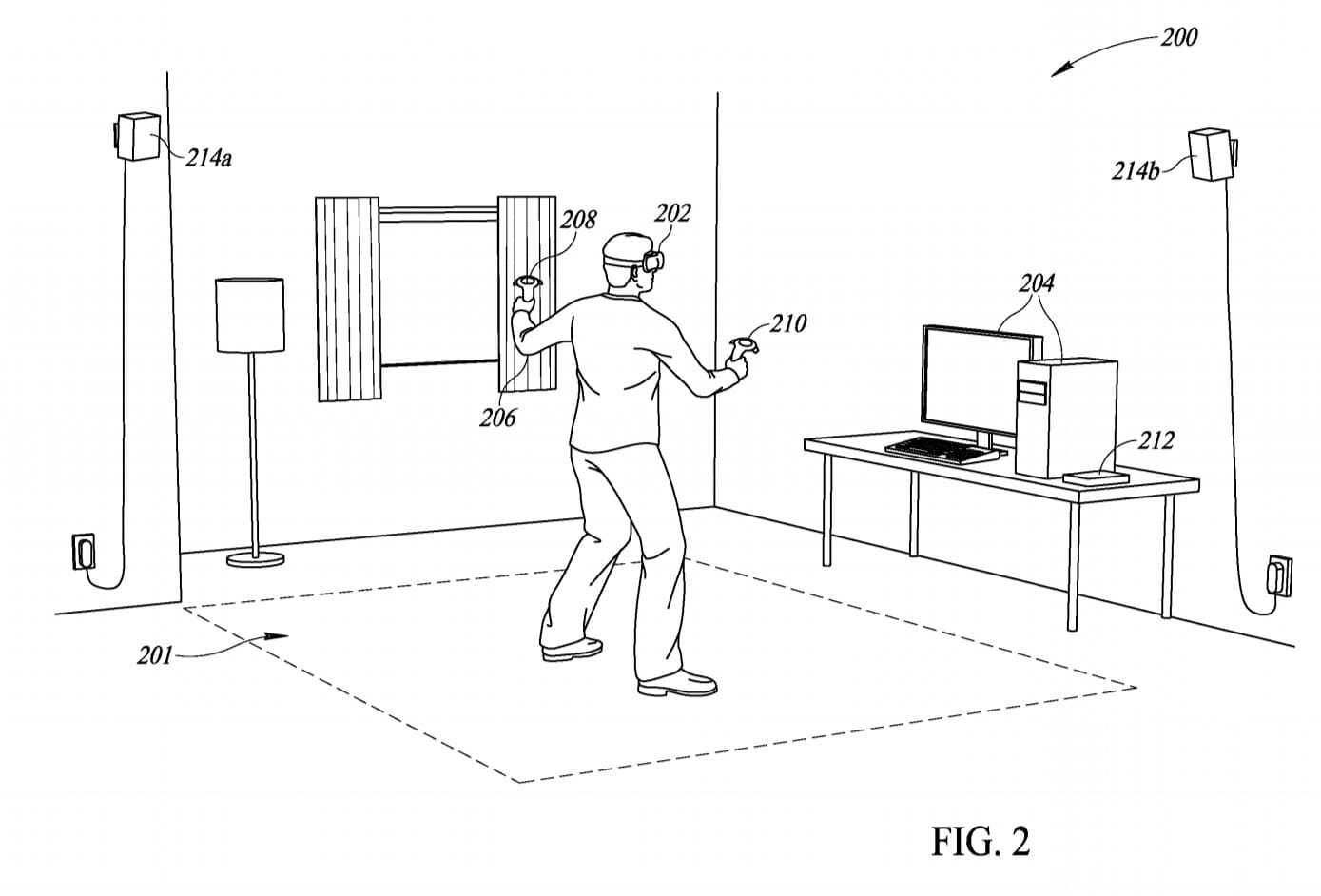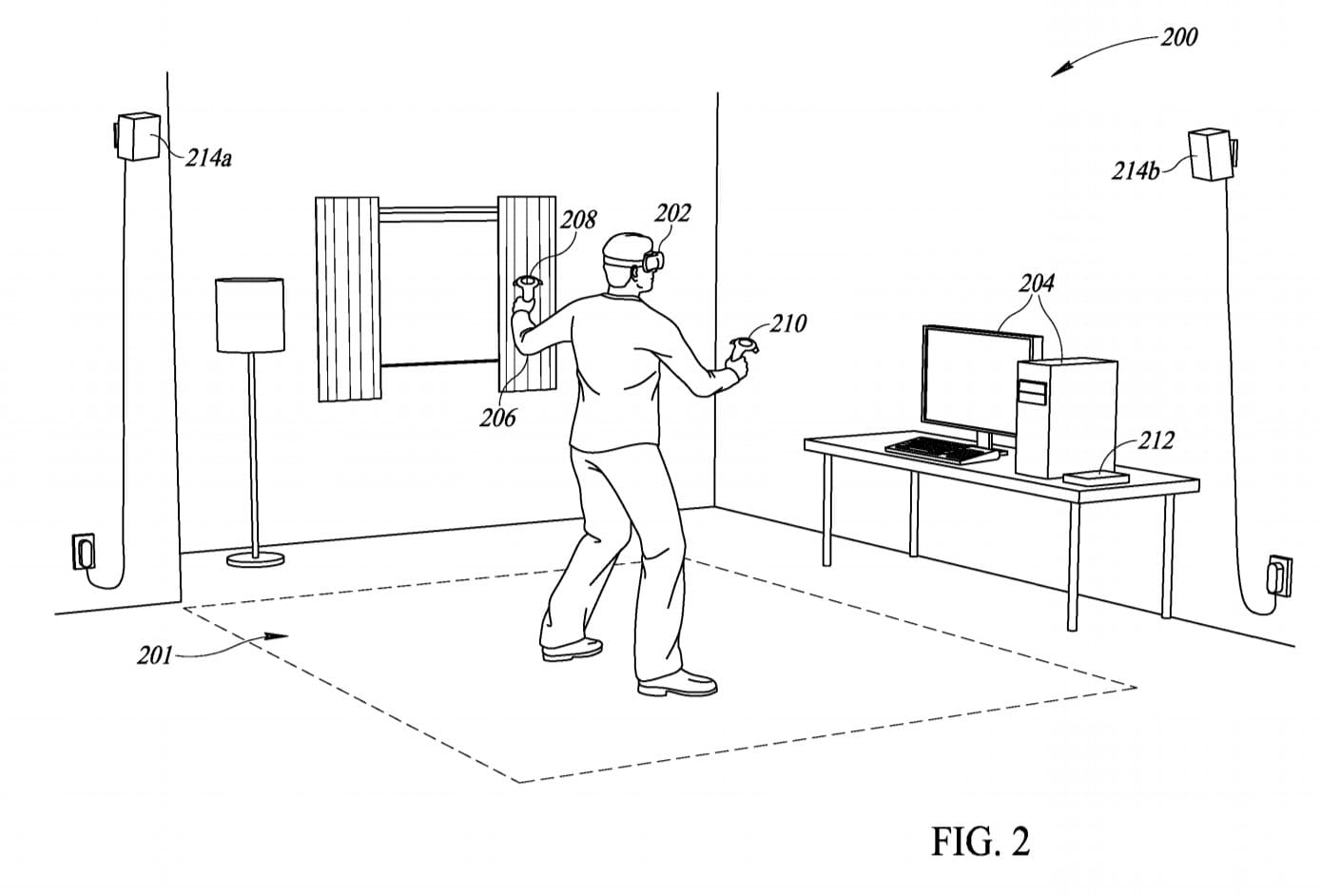
A new patent application filed by Valve last year, but published today, describes in detail a wireless VR system.
“At least in some implementations is provided a wireless data transmission system, which includes the electrically controlled antenna, such as antenna phased array which is able selectively to control its beam on the basis of the electronic control input,” reads the description of the patent application.
Wireless data transfer system may include a tracking subsystem that operates to monitor a mobile wireless device (e.g., HMD, tablet PC, smartphone), when the mobile wireless device is moved within the monitored volume. Preferably, a wireless data transmission system uses a known current or predicted future position and/or orientation of the mobile wireless device receiving the data (e.g., video data) from the tracking subsystem, and compensates for the movement of the mobile wireless device by selectively setting the directivity controllable antenna based at least partly on tracking data received from the tracking subsystem.
Valve continues to explore the possibilities of wireless virtual reality, but this patent application offers one of the most interesting views on ideas that explores a manufacturer of headsets and Index system SteamVR.

“Among other things, this feature allows you to reduce the amount of buffering that reduces latency — a critical parameter in some applications, such as applications of VR, where the MTP (Media Transfer Protocol) is an important industry indicator,” continues the app.
In addition, at least in some implementations of tracking data from other objects, such as one or more manual controllers can also be used to detect when the user’s hand moving in the direction that may block the antenna of the receiver mobile wireless device. It was found that even partial occlusion of a user’s hand, for example, can cause significant data loss without relying heavily on buffering, interleaving or forward error correction.
Earlier this month, due to the ajar behind the scenes of the creation of Half-Life: Alyx, it was stated that the hardware team at Valve working on the “what happens next”.Jeremy Selan them Valve said that at the moment the Index is already “technology two years ago”. And after the launch Alyx Greg CUMBER Valve also suggested that the end of the game may have some implications for the future of the hardware company, in other words, expect an updated (or new) VR headset.
Source








